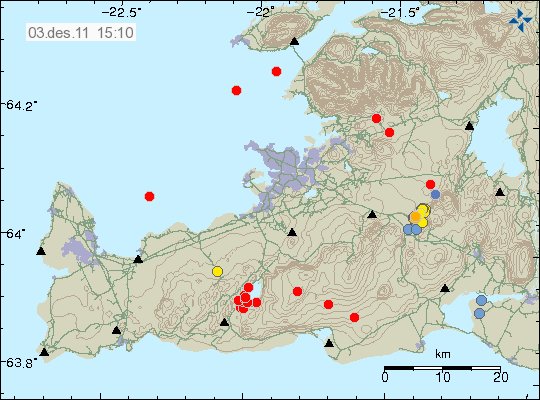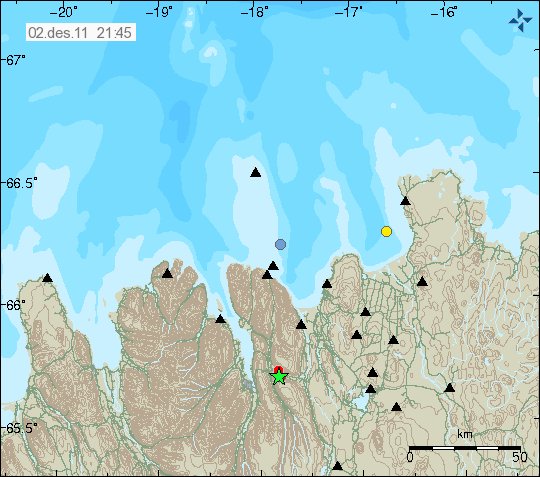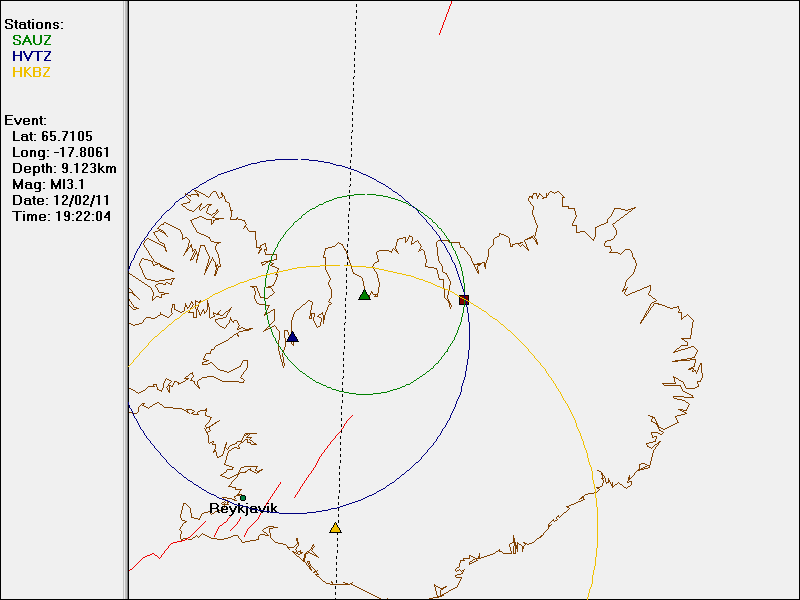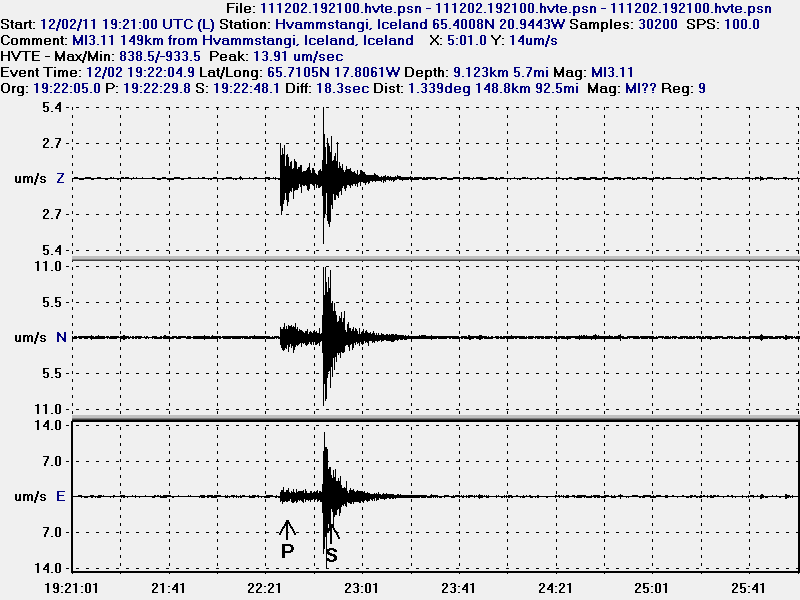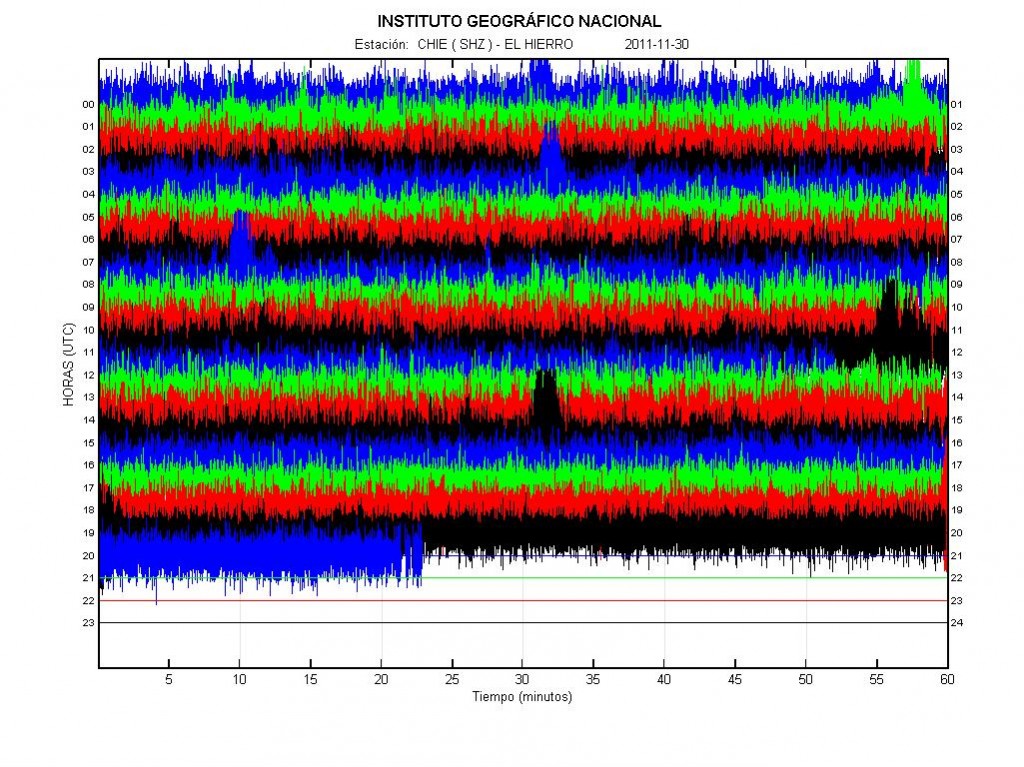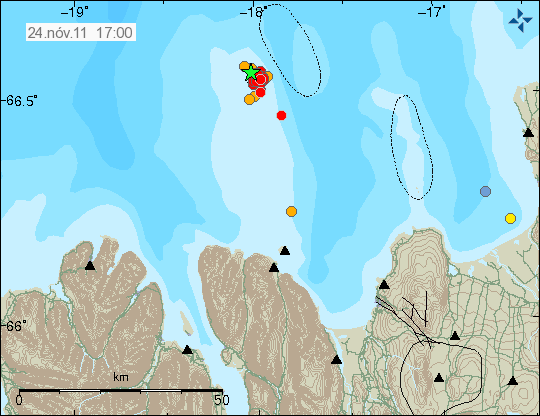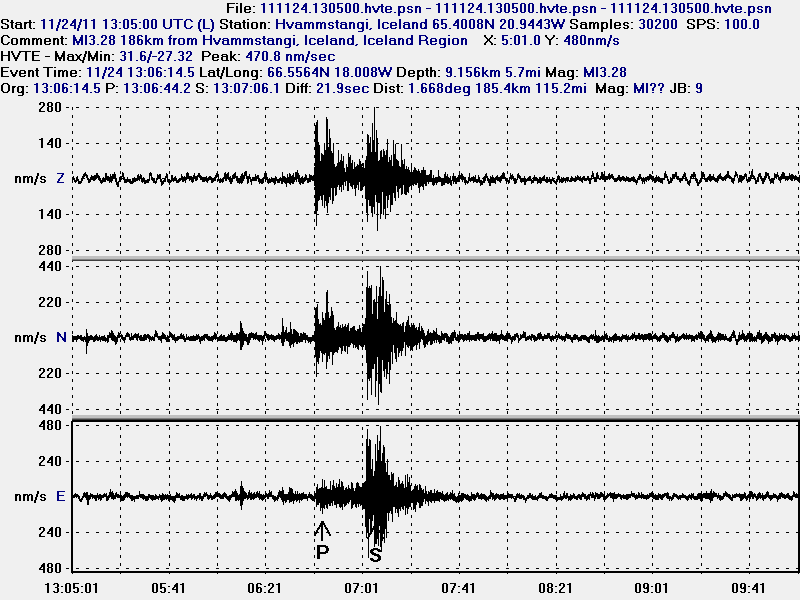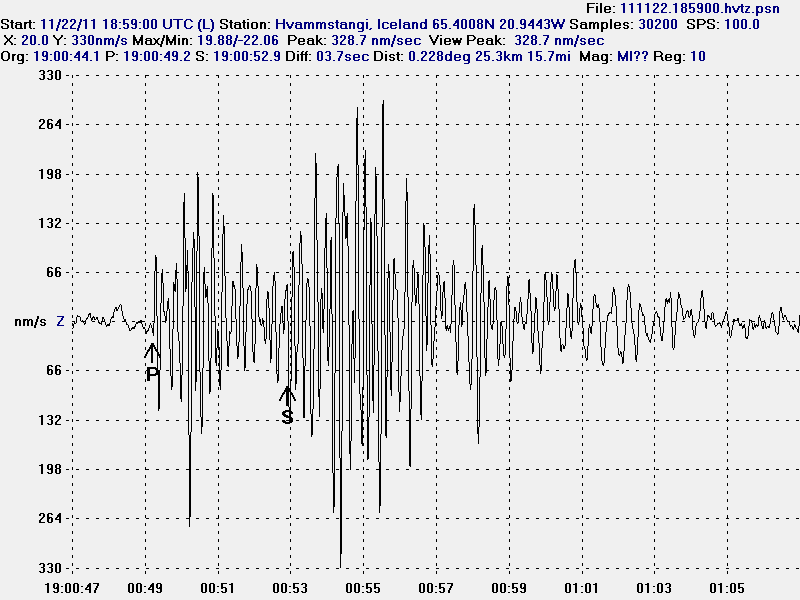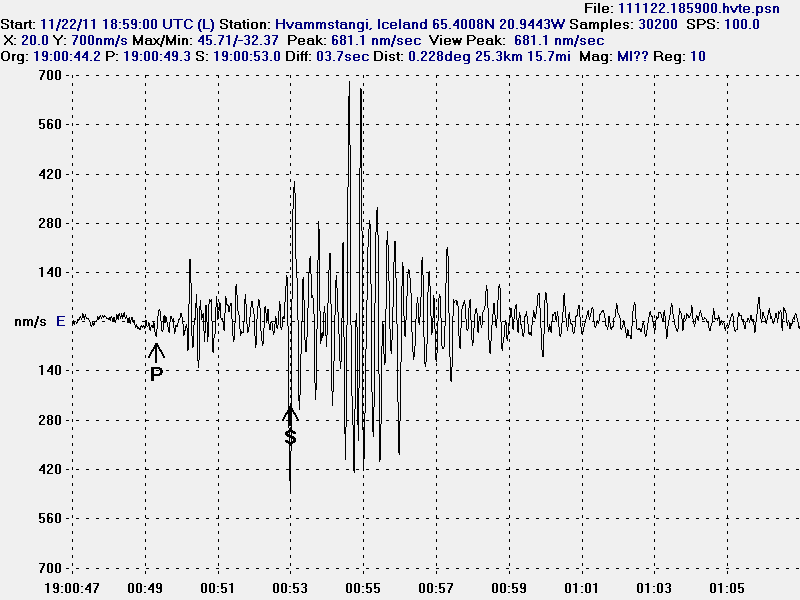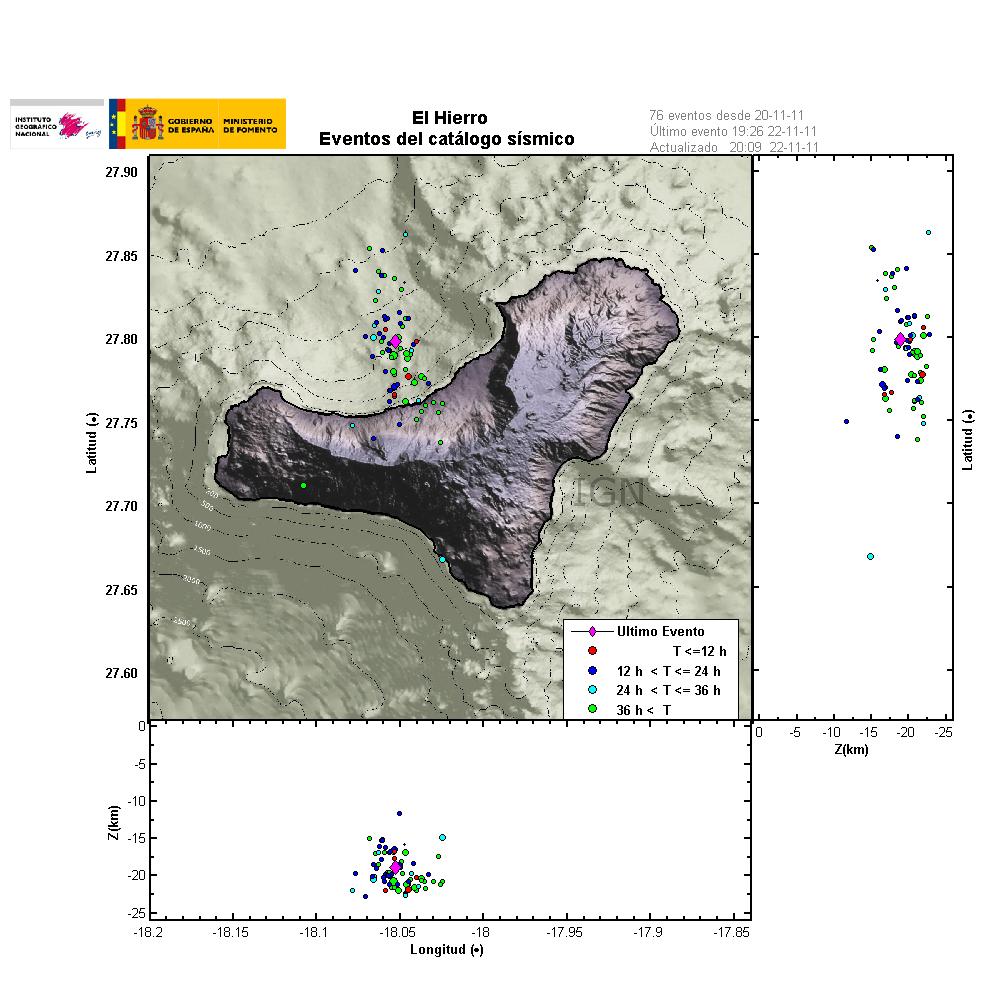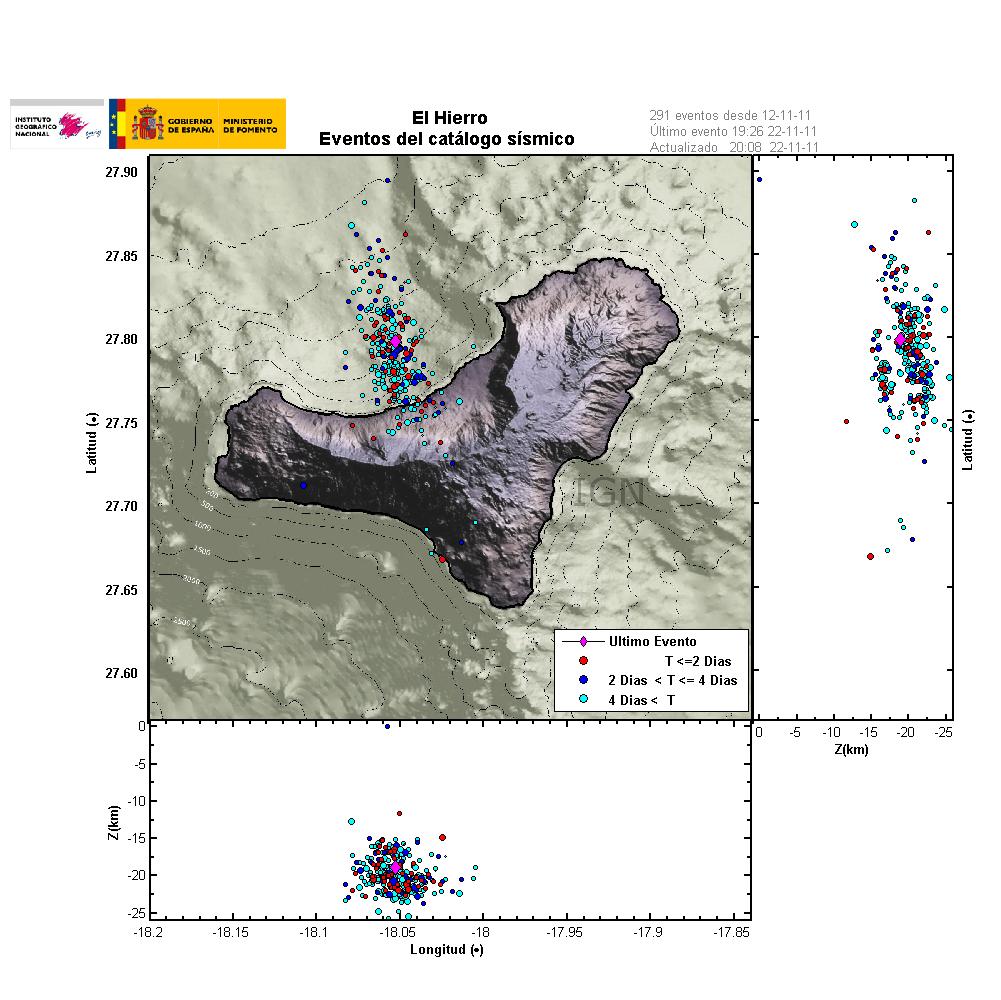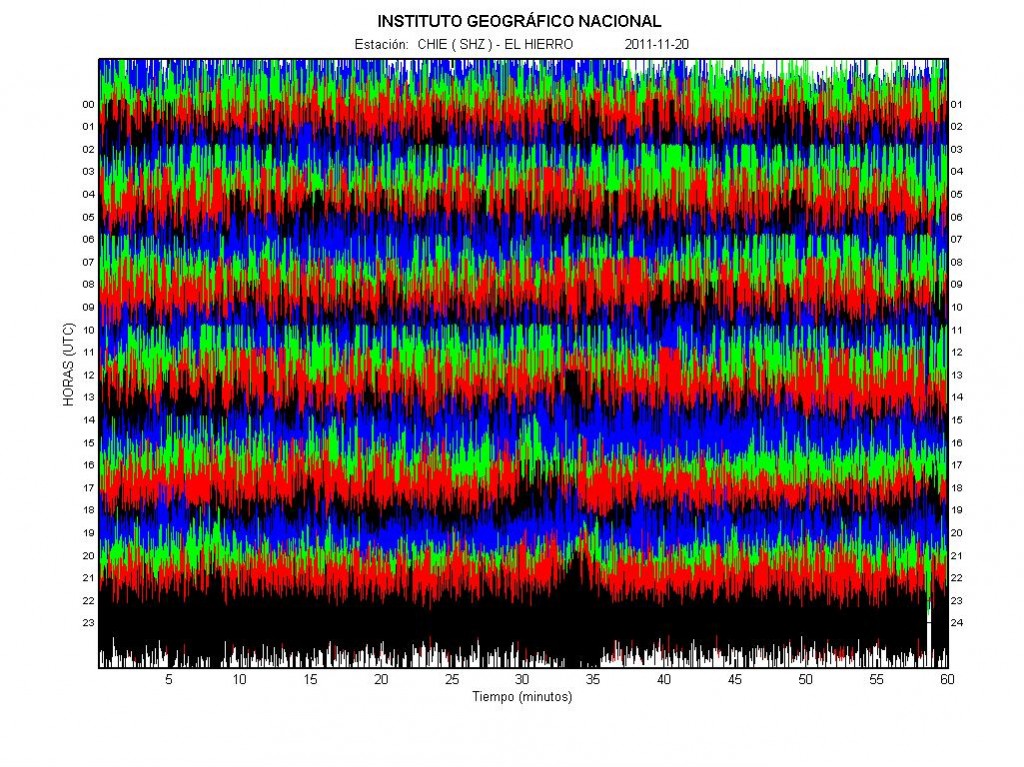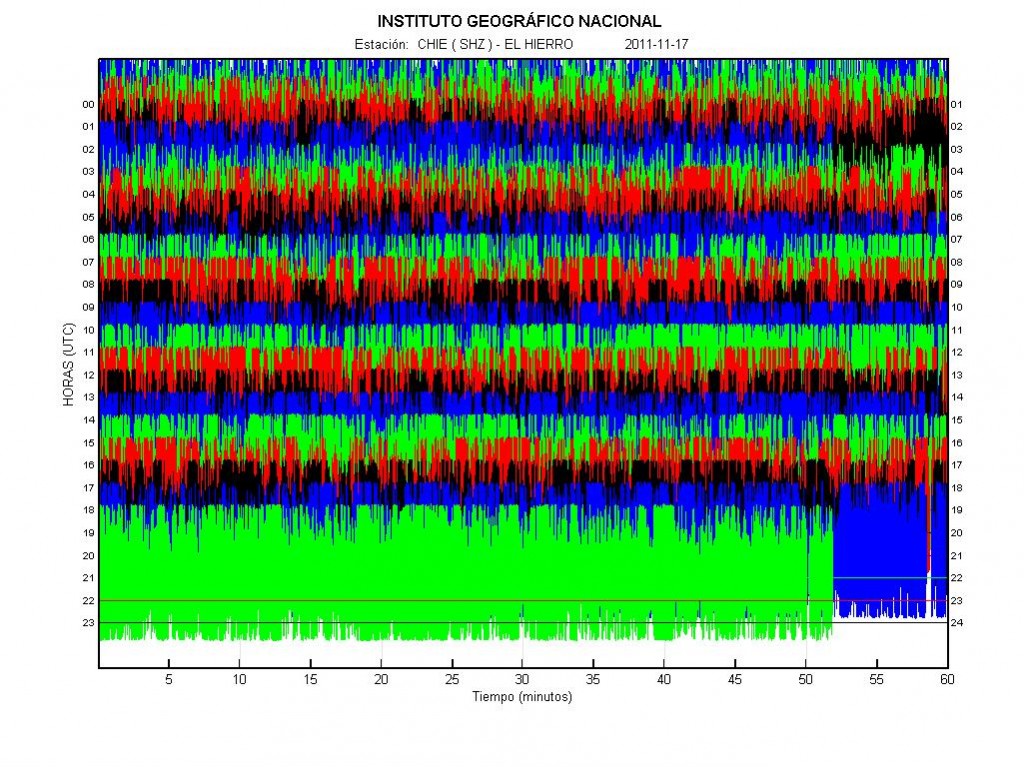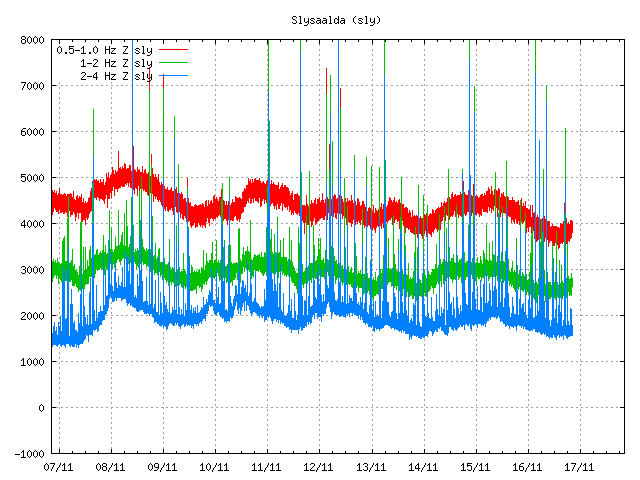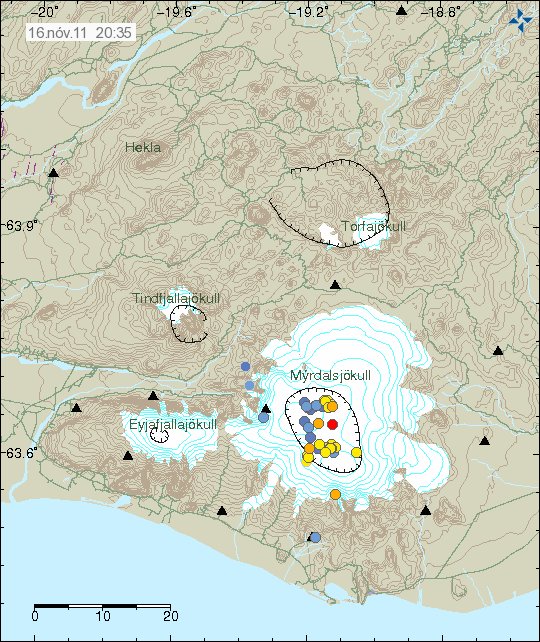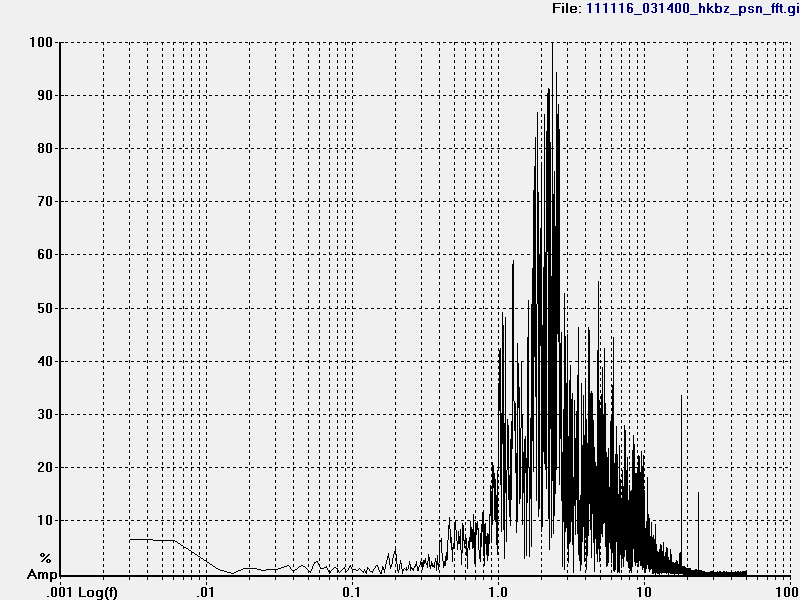There was a change in the eruption in El Hierro volcano last night. The harmonic tremor started to drop of slowly. This drop in harmonic tremor comes several days after a drop in earthquake activity happened. But it might be possible that this drop in earthquake activity in north El Hierro volcano might be because a erupting vent did open up in north El Hierro volcano. But at such depth that the eruption was not noticed on the surface on the ocean. At least that might be the reason. But without any data, this is just a speculation. But at any rate, the earthquake activity in north part of El Hierro volcano has dropped down to almost zero in few days time.

The harmonic tremor yesterday (5 December, 2011). The drop in harmonic tremor can clearly be seen here. Copyright of this picture belongs to IGN (Instituto Geográfico Nacional).
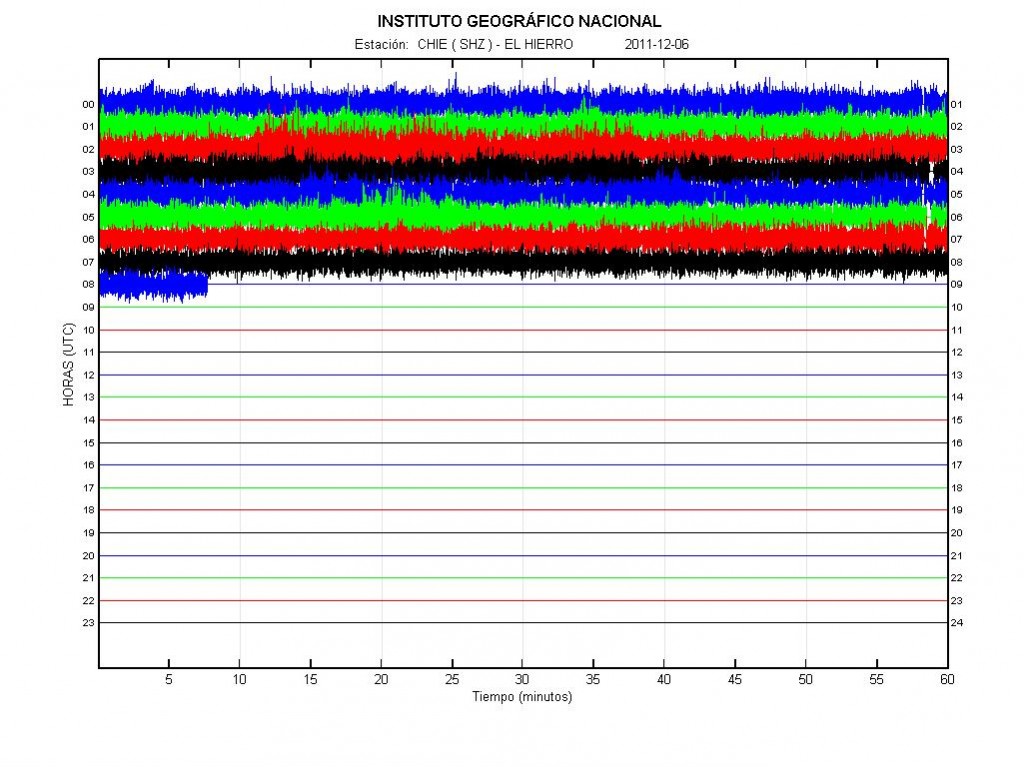
The harmonic tremor today at 08:15 UTC. The harmonic tremor continues to drop during the past few hours. Copyright of this picture belongs to IGN (Instituto Geográfico Nacional).
The harmonic tremor drop is something that has happened before in El Hierro volcano. Just before a new fissure did open up in El Hierro volcano eruption. I am unsure if that is the case now. But it should become clear in about two to three days. But it is also a possibility that this eruption is coming to a end. But it has been erupting now for close to three months now. So this eruption might just ending. But we might have to wait a bit until that is confirmed. But at the moment the harmonic tremor is dropping and that means the eruption is smaller for the moment.

